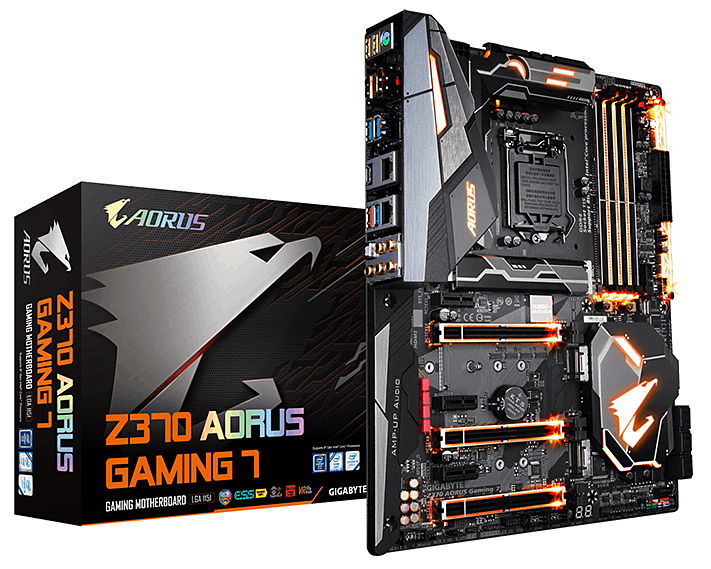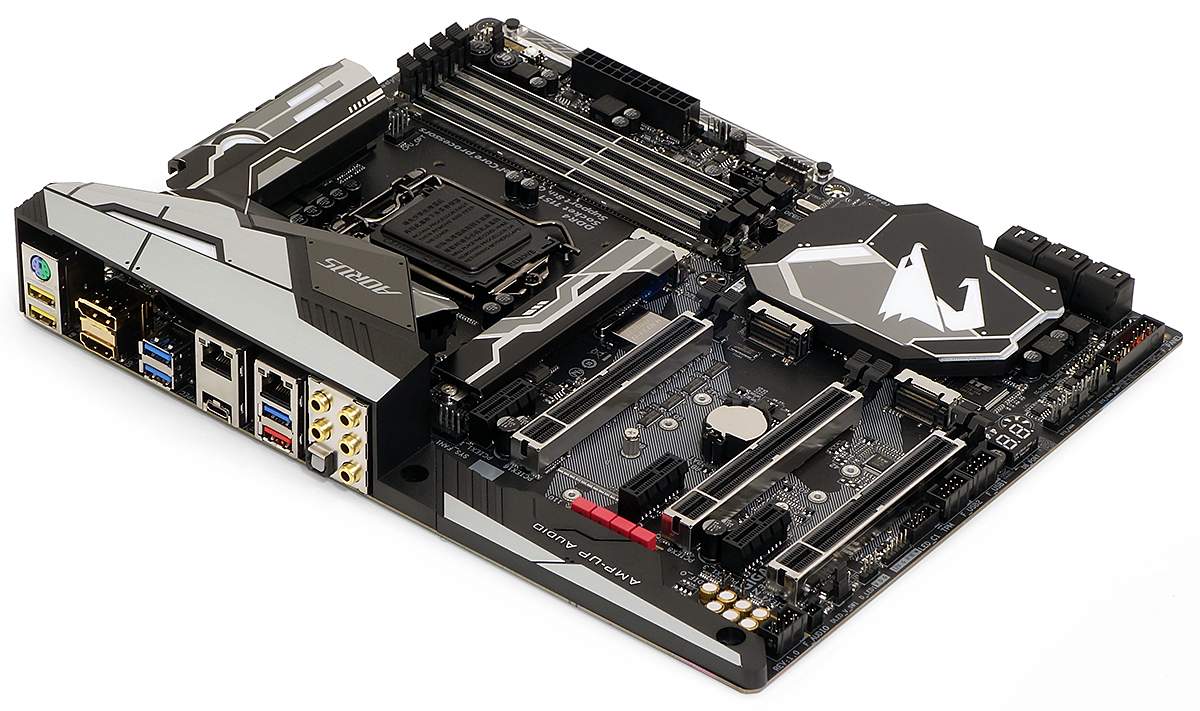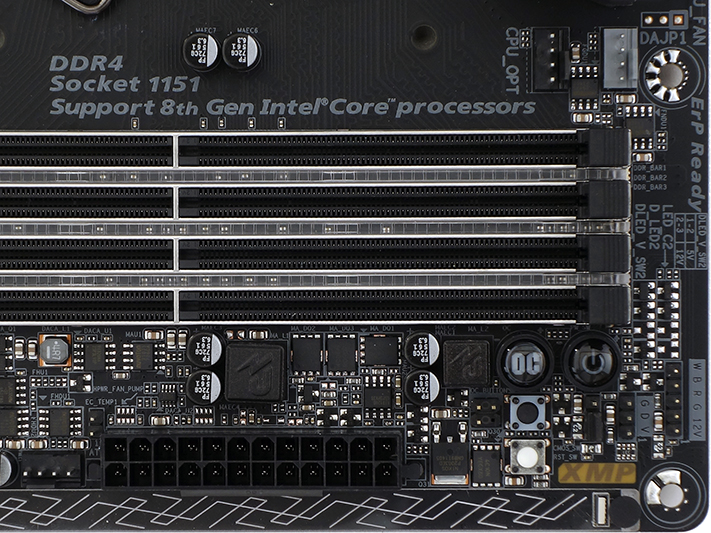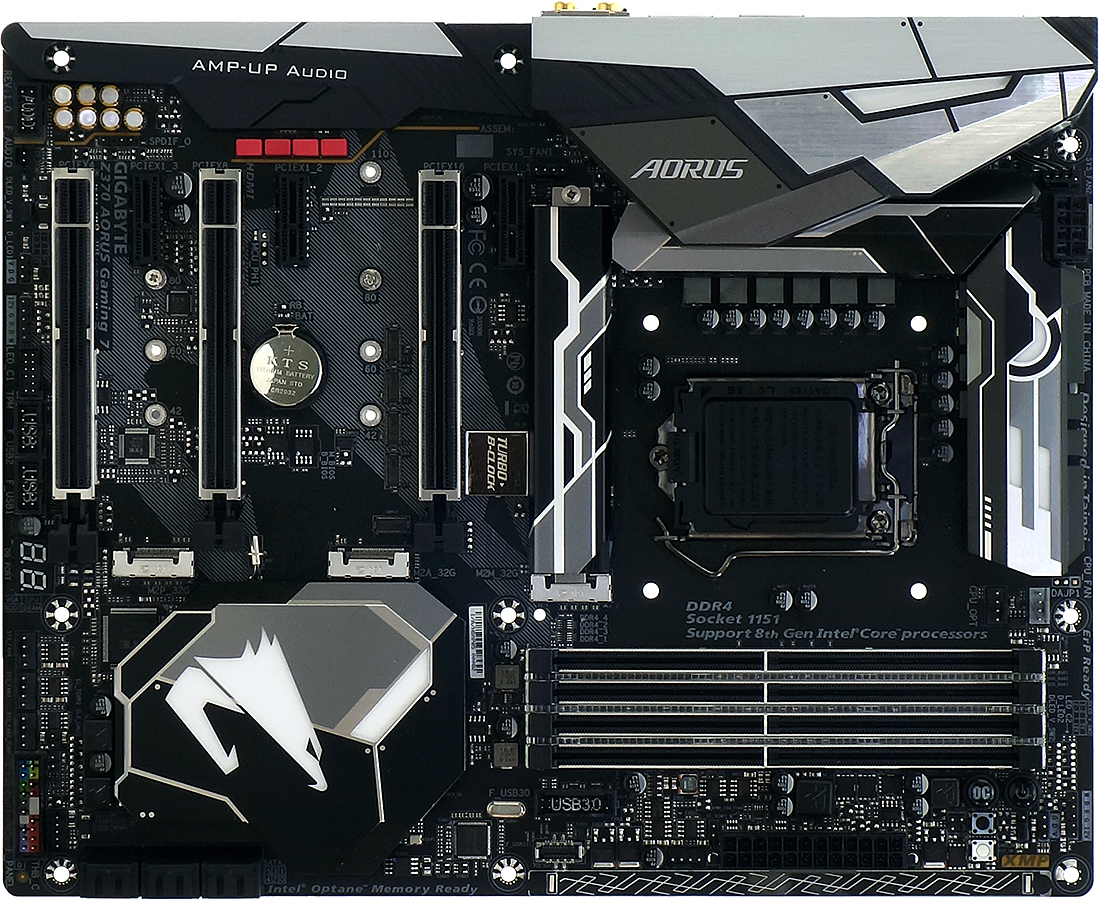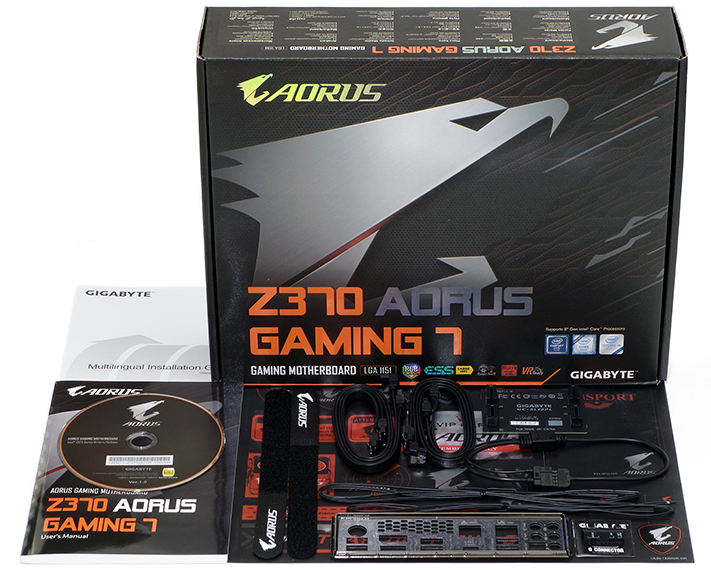Early Verdict
The Z370 has the features and overclocking to please most enthusiasts, at a price that will appeal primarily to show-system builders.
Pros
- +
Great overclocking
- +
Enhanced-quality audio components
- +
Dual USB 3.1 Gen 2 controllers with front-panel header
- +
Triple M.2 slots
- +
Excellent fan header configuration
- +
Enhanced on-board lighting plus two D-LED and two RGBW headers
Cons
- -
Moderately expensive for its feature set
- -
Poor efficiency for non-overclockers
Why you can trust Tom's Hardware
Features & Specifications
We're always evaluating a new product from two primary angles: whether it offers more features than its competitors for a similar price; or whether it offers similar features to its competitors at a lower price. Those familiar with Gigabyte’s Aorus Gaming motherboard series will instantly recognize the number "7" as representing a higher-end model, and it’s currently the highest model number in Gigabyte’s Z370 portfolio.
Gigabyte uses only odd numbers in its Aorus Gaming motherboard model names, and doing so leaves only the number "9" to fill the insanely-expensive premium class. For now, then, the question is whether the Z370 Aorus Gaming 7 is a near-premium part with a more reasonable price tag.
Specifications
The Z370 Aorus Gaming 7’s specification list looks more mainstream than its model number suggests, lacking many of the near-premium features found on previous-generation motherboards (in the $220-$280 price class). The voltage regulator has 10 phases, there are no auxiliary power inputs or LN2-mode switches for insane overclocking, hardware overclocking buttons are limited to a single O/C function, and there are no Wi-Fi or U.2 connectors. Also, did you notice that there are very few PCIe pathway conflicts? The Z370 Aorus Gaming 7’s best feature could just be that it’s designed to support most of its included features simultaneously.
A few Easter eggs fall outside the scope of our table, however, such as the ESS SABRE 9018 DAC with WIMA audio capacitors driving those five analog audio jacks, the Sound BlasterX 720° software designed to add features to the improved quality audio, and the Killer software suite that optimizes the E2500 Gigabit Ethernet controller that feeds its second Gigabit Ethernet connection, with each of these features worth at least a couple dollars. And then there are the not-so-obvious features that are in the specs list, such as the second ASM3142 PCIe 3.0 x2 controller that feeds a Gen2 USB 3.1 port designed for front-panel Type-C headers. Most previous-generation boards only had 10 Gb/s ports on the I/O panel. And the Z370 Aorus Gaming 7 still has two of those (a Type-C and a Type A).
Color me mildly disappointed that the I/O panel USB ports don’t follow industry standard color codes, but at least it’s easy to remember that the red port and the Type-C ports have 10 Gb/s interfaces, with remaining ports supporting 5 Gb/s maximum transfer rates. Gigabyte also includes a PS/2 keyboard/mouse port, DisplayPort 1.2 and HDMI 1.4 outputs for the CPU’s integrated graphics engine, and a digital optical audio output. The lack of any I/O panel CLR_CMOS buttons can be a blessing to anyone who’s afraid a passerby might deploy it, but reaching the internal button could be difficult once the build has been completed.
There are also voltage jumpers for the D-LED lighting connectors to address the availability of both 5V and 12V varieties. And there are two RBGW LED headers in addition to the duo of D-LEDs. These features, along with the two thermistor headers, are found on the board’s upper-front and bottom-rear corners.
The upper-front corner also has four handy buttons appropriately named power, reset, CRL_CMOS, and OC. The OC button, which lights when deployed, picked a 4.90 GHz overclock for our Core i7-8700K at 1.30V CPU core and appears to be OS-agnostic (even functioning in UEFI mode).
Get Tom's Hardware's best news and in-depth reviews, straight to your inbox.
LED strips between the DIMM slots and surrounding the x16-length PCIe slots can be programmed nearly any way you prefer, complementing the lighted windows of the I/O panel, voltage regulator, and Z370 PCH covers.
An extra space between the two main x16-length slots allows extra cooling for the top graphics card, as well as allowing the use of cards with extra thick coolers. Those two slots switch from x16/x0 to x8/x8 mode automatically when the second slot is filled. The third x16 slot features four pathways from the PCH, and is thus forced to share bandwidth with all three M.2 slots as well as any other chipset-connected device. It also drops to x2 mode whenever a drive is placed in the third M.2 slot. For most of the enthusiast market, that third slot is likely to be the only truly annoying example of resource sharing.
Less obtrusive shares include the top M.2 slot stealing HSIO resources from two SATA ports. Gigabyte understands that most enthusiasts won’t use more than four SATA ports, and while a SATA-interfaced card in the second M.2 slot steals another SATA port, most enthusiasts have long abandoned SATA for M.2.
The Z370 Aorus Gaming 7 has but one USB 3.0 front-panel port, and it’s located well above the top PCIe slot to avoid any connector conflicts. Users who want more high-speed front-panel ports will likely want a case with a Type-C interface and appropriate cable to match the Z370 Aorus Gaming 7’s 10 Gb/s front-panel header. Anyone who wants more than three front-panel ports is welcome to use one of the board’s three USB 2.0 front-panel headers.
Eight 4-pin fan headers that are individually configurable between PWM and voltage regulation modes are strategically placed behind the audio ports (1), next to the EPS12V connector (1), forward of the CPU voltage regulator (2), next to the main power connector (1), and toward the front of the bottom edge (3). Combining the placement of the two-digit status code display at the bottom edge with the likelihood that enthusiasts won’t use that slot for a graphics card, the only remaining layout concern is that the front-panel audio header is a little too far back into the bottom-rear corner for the cables of certain poorly configured cases to reach. That concern is nearly trivial, since we’re constantly patrolling for poorly-configured cases.
The Z370 Aorus Gaming 7 includes documentation, a driver and application disc, a sheet of stickers, two Velcro cable ties, four SATA cables (two straight, two with a right-angled end), an HB style SLI bridge, an RGBW extension cable, two thermistor leads, an I/O shield, a G-Connector cable bundler for front-panel LED and switch connectors, and a case badge. An included M.2 heat spreader comes installed over an empty M.2 slot, as shown in motherboard images.
MORE: Best Motherboards
MORE: How To Choose A Motherboard
MORE: All Motherboard Content
